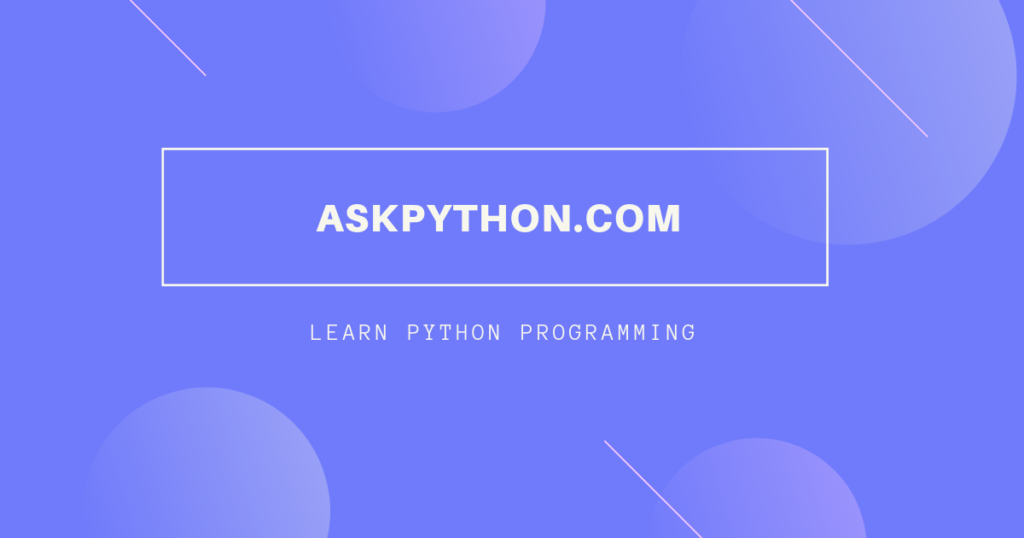Think of Statsmodels as Python’s answer to R and Stata. While Python has plenty of libraries for crunching numbers, Statsmodels specifically focuses on statistical analysis and econometric modeling, the kind of work where you need p-values, confidence intervals, and detailed diagnostic tests.
The latest version (0.14.5, released July 2025) gives you tools for estimating statistical models, running hypothesis tests, and exploring data with proper statistical rigor. We’re not just talking about making predictions here. Statsmodels helps you understand relationships between variables, test theories, and build models you can actually interpret and defend in front of skeptical stakeholders or peer reviewers.
I use Statsmodels when I need to answer “why” questions, not just “what” questions. It complements the usual suspects like NumPy and SciPy by going deeper into statistical inference.
How is Statsmodels different from SciPy and Scikit-learn?
Python’s scientific stack features multiple libraries that work with statistics, but they serve distinct purposes.
SciPy: The Basic Toolkit
SciPy gives you fundamental statistical operations: correlations, t-tests, and basic probability distributions. Great for quick calculations, but it stops there. You won’t get model diagnostics, comprehensive hypothesis testing frameworks, or the detailed parameter estimates that serious statistical work demands.
Scikit-learn: The Prediction Machine
Scikit-learn is built for machine learning. Fit a linear regression model, and you get coefficients for making predictions. The library prioritizes aspects such as cross-validation scores and preventing overfitting.
Here’s a key difference: scikit-learn regularizes models by default. That’s perfect for prediction tasks, but sometimes you actually want unregularized estimates to understand the true relationship between variables.
Statsmodels: The Statistical Inference Engine
When I fit a linear regression with Statsmodels, I don’t just get coefficients. I get:
- P-values for each coefficient
- Confidence intervals showing the range of plausible values
- R-squared and adjusted R-squared for model fit
- Diagnostic tests checking whether my model assumptions hold
- Detailed residual analysis revealing problems I might have missed
Statsmodels tells me whether my results are statistically significant and how confident I should be in them. Plus, I get access to specialized models you won’t find in scikit-learn: ARIMA and SARIMAX for time series, panel data models, instrumental variables regression, and various GLM families for different types of outcomes.
What can you actually do with Statsmodels?
Let me break down the main categories, because Statsmodels covers a lot of ground.
Linear Regression Models
The foundation of any statistical toolkit. Ordinary Least Squares (OLS) is your starting point, but Statsmodels doesn’t stop there:
- Generalized Least Squares (GLS) for when your errors are correlated
- Weighted Least Squares (WLS) when different observations have different variances
- Quantile regression for modeling different parts of your response distribution
Generalized Linear Models
GLMs extend linear regression to handle non-normal outcomes. Need to predict whether a customer will churn? Use logistic regression. Modeling count data like website visits per day? Poisson regression has you covered. The library supports all one-parameter exponential family distributions.
Time Series Analysis
Statsmodels really shines here. You get:
- ARIMA models for forecasting based on past patterns
- SARIMAX adding seasonal components and external predictors
- Vector Autoregression (VAR) for multiple related time series
- Diagnostic tools like ACF and PACF plots, stationarity tests, seasonal decomposition
Robust Regression
Real data has outliers. Robust Linear Models (RLM) use M-estimators that automatically downweight extreme observations, so a few weird data points don’t ruin your entire analysis.
Discrete Choice Models
When your outcome is categorical:
- Multinomial logit for unordered categories
- Ordered logit and probit for ordered categories
- Conditional logit for choice modeling
Why do researchers and data scientists actually choose this library?
Statsmodels fills a gap that frustrated statisticians who switched from R to Python. Python had amazing machine learning libraries but lacked the statistical depth that R provided. Statsmodels changed that.
The Formula Interface
Instead of manually creating design matrices, you write formulas like 'sales ~ advertising + price + np.log(population)'. The library handles categorical variables, interactions, and transformations automatically through the Patsy formula system. Anyone coming from R will feel right at home.
Detailed Output That Matches Statistical Software
When you print a model summary, you see everything you need:
- Coefficient estimates with standard errors
- T-statistics and p-values
- Confidence intervals
- Information criteria (AIC, BIC)
- Goodness-of-fit measures
Results are validated against R and Stata, so you can trust the numbers match established statistical packages.
Comprehensive Testing Infrastructure
You can test individual parameters, run Wald tests on multiple parameters simultaneously, or compare models using likelihood ratio tests. The library includes diagnostic tests for heteroscedasticity, autocorrelation, normality, and other assumption violations.
Smooth Integration with Pandas
Pass DataFrames directly to models, reference columns by name in formulas, and get results that align with your original data structure. No awkward conversions or data wrangling.
What are the tradeoffs and limitations?
No library is perfect. Statsmodels makes specific choices that affect when you should use it.
Steeper Learning Curve
You need to understand statistical concepts to interpret the output properly. Terms like heteroscedasticity, autocorrelation, and multicollinearity aren’t just jargon. They’re diagnostics telling you something important about your model. The library assumes you know what these mean and when to apply corrections.
Performance Considerations
Statsmodels prioritizes statistical correctness over computational speed. For datasets with 100,000+ observations, you might notice slower fitting times compared to scikit-learn’s optimized implementations. The library handles typical research datasets fine, but isn’t built for big data scenarios.
Less Automation for ML Workflows
Scikit-learn has built-in cross-validation, grid search, and model pipelines. Statsmodels doesn’t include these tools because they’re less relevant for statistical inference. You can combine both libraries: use scikit-learn for preprocessing and validation, Statsmodels for detailed analysis.
Variable Documentation Quality
Core features like linear regression, GLM, and time series models have excellent documentation. Newer or specialized features sometimes have limited examples or assume advanced statistical knowledge. The community is active, but you might need Stack Overflow or academic papers for edge cases.
How does Statsmodels fit into real workflows?
Most data scientists don’t pick one library and stick with it. They use different tools for different stages.
Exploratory Analysis
Statsmodels helps you understand what’s happening in your data. Fit models quickly, check assumptions, test hypotheses. The diagnostics reveal issues like outliers, multicollinearity, or violated assumptions that summary statistics miss.
Research and Publication
Academic journals require statistical rigor. Statsmodels gives you proper standard errors, appropriate test statistics, and validated implementations. When reviewers ask about statistical significance or model assumptions, you have answers.
Production Systems
Many teams prototype with Statsmodels to verify statistical properties and understand relationships. Once the model is validated, they implement the same approach in scikit-learn for faster prediction and easier integration with ML pipelines.
Time Series Forecasting
Statsmodels often stays in production here because it offers ARIMA, SARIMAX, and VAR models that aren’t available elsewhere in Python. The library handles seasonality, external predictors, and complex time series patterns.
What’s new in the current version?
Version 0.14.5 (released July 2025) reflects years of continuous improvement. The development team has focused on compatibility, performance, and expanding capabilities.
- NumPy 2.0 Compatibility: Works seamlessly with the latest scientific computing stack. Recent compatibility releases addressed breaking changes in dependencies.
- Enhanced State Space Models: More flexible time series modeling with custom state space representations for specialized problems.
- Improved Mixed Effects Models: Better handling of hierarchical and longitudinal data. MixedLM supports more complex random effects structures and converges more reliably.
- Expanded Statistical Testing: Additional diagnostic tests and improved implementations based on user feedback and statistical research developments.
Who should use Statsmodels?
Different communities rely on Statsmodels for different reasons.
- Academic Researchers: Need publication-quality results with detailed diagnostics and validated implementations that survive peer review.
- Economists and Social Scientists: Use specialized econometric models like panel data analysis, instrumental variables, and time series methods for policy research.
- Data Scientists Doing Explanatory Analysis: Need to understand relationships, test hypotheses, and build interpretable models. Stakeholders want to know why relationships exist, not just predictions.
- R Users Switching to Python: Appreciate the familiar formula syntax and statistical depth. You don’t sacrifice analytical capabilities by moving to Python.
The library evolves through active community development and regular releases. Whether you’re testing economic theories, analyzing clinical trial data, or building interpretable business models, Statsmodels provides the statistical foundation your analysis needs.

